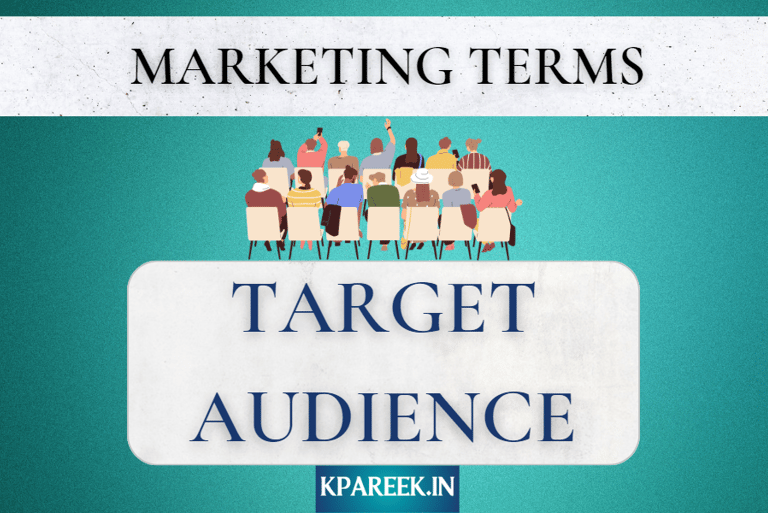Marketing Terms: Target Audience
Understanding Marketing Terms : Target Audience
MARKETINGTERMS
Kartikya Pareek
4/25/20232 min read
Marketing's Target Audience: Knowing Who You're Selling To
In marketing, knowing your target market is crucial for developing engaging campaigns that boost participation and revenue. But what exactly is a target audience, and why is it significant? We'll talk about the idea of a target audience in marketing and why it matters in this post.
What is a Target Audience?
A target audience is a certain demographic that a company is attempting to reach with its marketing initiatives. The characteristics of this group include things like age, gender, income, place of residence, interests, and more. Businesses can develop marketing plans to suit this group's requirements and preferences by identifying and comprehending them.
How Important Is a Target Audience?
There are many advantages to focusing your marketing efforts on a certain market. One benefit is that it enables you to design campaigns that are more potent and more likely to connect with your target demographic. You can boost engagement and eventually improve revenue by speaking to their interests and needs.
You can also save time and money by focusing your marketing efforts. Focusing your efforts on a certain group can be more productive and efficient than attempting to appeal to a large audience.
How to Find Your Target Market
You'll need to conduct some investigation and analysis to determine who your target market is. To get you started, follow these simple steps:
Define your service or product. Who benefits most from it, and what problem does it solve?
Determine who your present clients are. What are the demographics and buying habits of the customers who are currently using your product or service?
Run a market analysis. To learn more about the requirements, tastes, and behaviors of your target audience, use surveys, focus groups, and other research techniques.
Review the data. Create a profile of your ideal consumer using the data you have acquired. Along with psychographic data like interests, values, and behaviors, this should also include demographic data like age, gender, income, and location.
Once you've determined who your target market is, you can utilize this knowledge to develop marketing campaigns that speak to them and encourage interaction.
A Simple Example of a Target Audience
Say you run a coffee shop and want to draw in more customers. You may start by identifying your product: you sell pastries and coffee that are made with ethically sourced ingredients.
The following step is to identify your current clients and carry out market research. You discover that most of your current clients are young professionals who place high importance on sustainability and quality. They want to support small companies in their community and are willing to pay more for high-quality coffee.
Using this data, you develop a target audience profile of young professionals in the urban center, between the ages of 25 and 35, who are interested in sustainability and high-quality coffee. Using this profile, you may design marketing campaigns that are specifically aimed at this group, such as social media advertisements and email newsletters.
Conclusion
To develop successful marketing efforts, it is crucial to comprehend your target demographic. You can promote engagement and eventually boost sales by determining who you're selling to and then adjusting your pitch to suit their needs and preferences. The strategies discussed in this article might help you pinpoint your target market and develop ads that speak to them.
References:
Kotler, P., & Armstrong, G. (2010). Principles of marketing. Pearson Education.
McDonald, M. H. B., & Wilson, H. (2016). Marketing plans: How to prepare them, how to profit from them. John Wiley & Sons.
Schultz, D. E., & Barnes, B. E. (1999). Strategic advertising campaigns. Prentice Hall.


